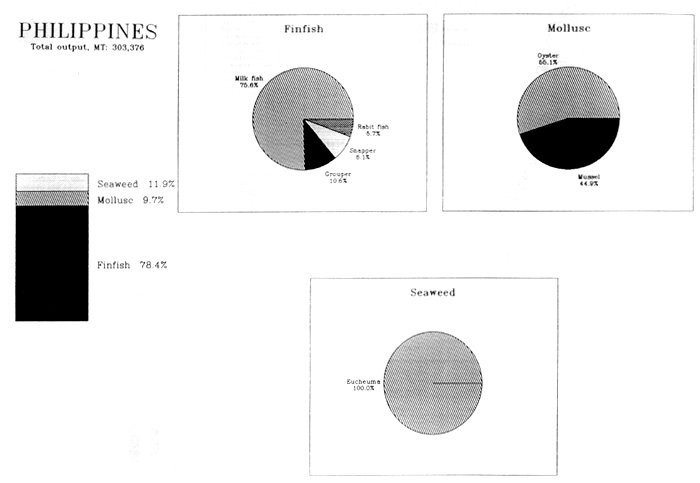
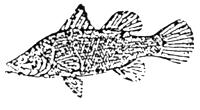 | Lates calcarifer |
CULTURE PRACTICES
Seabass are either cultured in brackishwater pond, floating netcages or pens in protected coves and bays. At present, netcage culture is gaining considerable attention among fish farmers. Netcages have been set up mainly in Lingayen Gulf and along the southeast coast of Panay Island, however numerous potential sites have also been identified throughout the country. A floating netcage farm consists of a number of interlocked cages suspended in a bamboo and/or wooden frame. The farm is either kept afloat by a bamboo raft or styrofoam floats, and it is held in place by heavy anchors. The netcages are of different sizes, with netting of different mesh sizes. Hapa cages are made of fine mesh net and are used to rear fry to fingerling size. Nursery cages are used to culture fingerlings up to 15–20 cm, while in the grow-out cages the fish attain the marketable size. A grow-out cage commonly measures 2×2×2 m and the juvenile fish are stocked at a density of about 40 pcs/CBM. The fish are fed on chopped trash fish usually once daily. To prevent diseases the netcages are regularly cleaned.
PRODUCTION
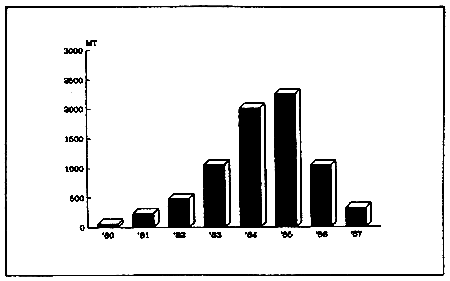
HISTORY
Seabass culture in the Philippines is considered a newly introduced technique. While grow-out technology has not yet been fully documented, hatchery production has so far been gaining momentum as a developing industry. However, at present seed still comes mostly from wild caught individuals. Known culture practices include grow-out system utilizing brackishwater fish ponds and floating netcages or pens in shallow coves and bays.
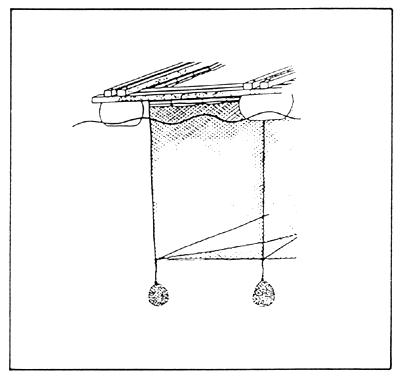
TOTAL REGIONAL PRODUCTION
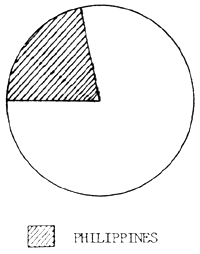

STATUS OF CULTURE
| TOPIC | SPECIES | 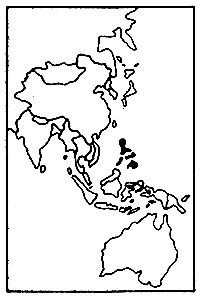 |
| Lates calcarifer | ||
| Source of seed | Wild and artificial | |
| Culture method | Pond, pen and floating netcage | |
| Yield/ha | NA | |
| Market | Domestic and export | |
| Production area | NA | |
| Status of culture | Developing | |
| Major constraints | Development of hatchery technology Refinement of grow-out techniques Feed development | KEY MAP |
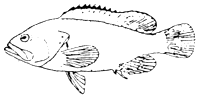 | Epinephelus tauvina |
CULTURE PRACTICES
Grouper seed supply depends on collection from the wild, although induced spawning has recently been reported. The seed of estuary grouper are collected along the shoreline and in the mouth of rivers. The main fry catching season occurs between September and January. The wild fry are graded and then dipped in weak sodium sulfamethazine or in methylene blue for about 20 minutes to prevent bacterial infection. The fish are then transferred to floating netcages of 3 × 3 m at a stocking density of 60 fish/CBM. The fry are fed twice daily on fresh trash fish or green mussel finely chopped. Food conversion ratio with trash fish and mussel is about 5–6 kg per 1 kg of grouper. To reduce size hierarchy within the cages and ensure uniform growth, constant grading of the fish is necessary, particularly in young groupers. In order to avoid disease outbreaks, preventive measures are always taken, like proper and frequent changing of the netcages. This ensures better growth due to efficient water flow in and out of the cage and providing adequate supply of oxygen.
PRODUCTION
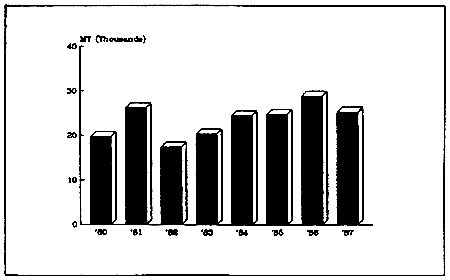
HISTORY
Grouper culture in the Philippines is a newly introduced practice. It has been known to exist in some brackishwater fish ponds in Bulacan before 1985 and has since gained interest as a result of the high market price of groupers. Recently a considerable number of netcages has been set up in bays and coves particularly in Lingayen Gulf and Pangasinan. A well defined culture technology however, has not yet been established and feed development remains one of the major constraints to the expansion of this seafarming practice.
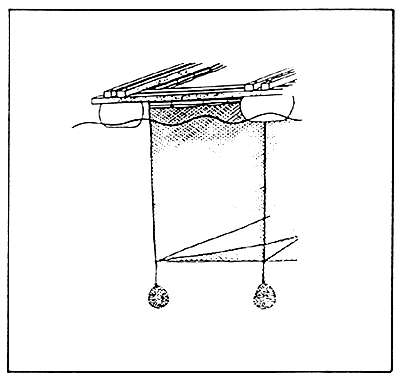
TOTAL REGIONAL PRODUCTION
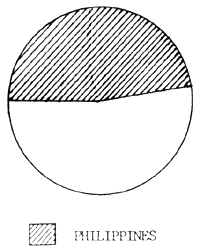
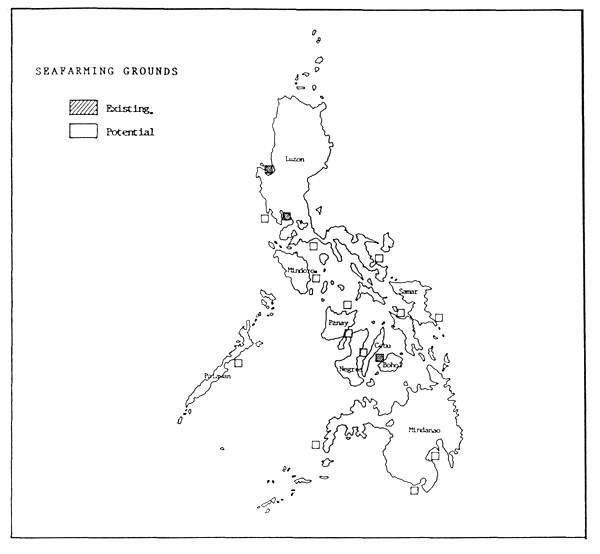
STATUS OF CULTURE
| TOPIC | SPECIES |  |
| Epiniphelus tauvina | ||
| Source of seed | Wild | |
| Culture method | Pond and floating netcage | |
| Yield/ha | NA | |
| Market | Domestic and export | |
| Production area | NA | |
| Status of culture | Developing | |
| Major constraints | Development of hatchery technology Refinement of culture techniques Feed development | KEY MAP |
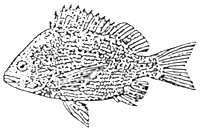 | Lutjanus johni |
CULTURE PRACTICES
Although commercial culture of snappers is not yet practiced in the Philippines, culture trials using floating netcages have been attempted. Potential culture sites have been identified in numerous localities throughout the country. The netcage design and construction are the ones used for culturing other marine finfish. A floating netcage farm consists of a number of interlocked cages suspended in a bamboo and/or wooden frame. The farm is either kept afloat by a bamboo raft or styrofoam floats, and it is held in place by heavy anchors. The netcages are of different sizes, with netting of different mesh sizes depending on the initial size of the fingerlings. Hapa cages are made of fine mesh net and are used to rear fry to the fingerling size. Nursery cages are used to culture fingerlings up to 15–20 cm, while in the grow-out cages the fish attain the marketable size. A grow-out cage commonly measures 2 × 2 × 2 m. Snapper fry are fed twice daily on finely chopped fresh trash fish or green mussel.
PRODUCTION
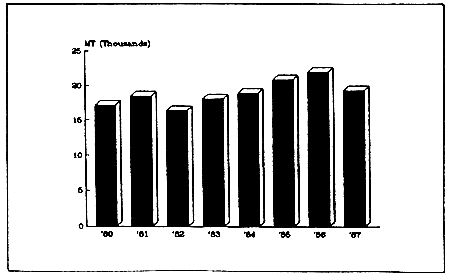
HISTORY
The only known production source is capture fisheries. In 1987 over 19,000 MT were fished from the coastal waters along the entire country. Culture potential is however great as this is a widely distributed fish with a high local and export market demand. Proper management techniques for grow-out have yet to be established including feed requirements, seed production and source.

TOTAL REGIONAL PRODUCTION
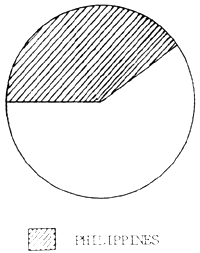
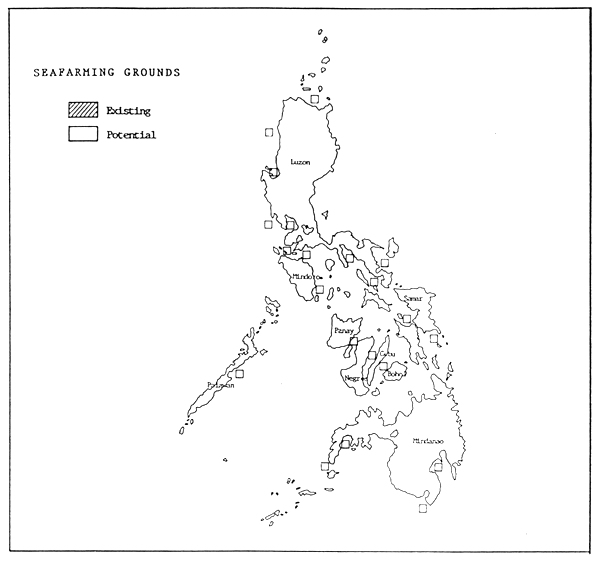
STATUS OF CULTURE
| TOPIC | SPECIES |  |
| Lutjanus johni | ||
| Source of seed | Wild | |
| Culture method | Floating netcage | |
| Yield/ha | NA | |
| Market | Domestic and export | |
| Production area | NA | |
| Status of culture | Developing | |
| Major constraints | Hatchery and culture techniques Lack of suitable artificial diet | KEY MAP |
 | Chanos chanos |
CULTURE PRACTICES
Milkfish are widely cultured in brackishwater fishponds and freshwater pens. However, floating netcages are also being used for broodstock management and maturation. Netcage culture in the Philippines is not yet a well established or developed culture technique. A floating netcage farm consists of a number of interlocked cages suspended in a bamboo and/or wooden frame. The farm is either kept afloat by a bamboo raft or styrofoam floats, and it is held in place by heavy anchors. The netcages are of different sizes with netting of different mesh sizes. Hapa cages are made of fine mesh net and are used to rear fry to fingerling size. Nursery cages are used to culture fingerlings up to 15–20 cm, while in the grow-out cages the fish attain the marketable size. A grow-out cage commonly measures 2×2×2 m. Pen culture of milkfish is widely practiced, particularly in Laguna de Bay near Manila. No artificial diet has yet been developed, however commercial fertilizers are regularly used to enhance plankton growth on which milkfish feed on.
PRODUCTION
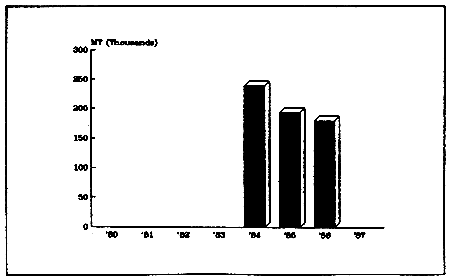
HISTORY
Milkfish is cultured almost all over the country. Culture of this species has been carried out for a long time. Culture techniques have recently been modified from the traditional extensive method to a more intensive one. The grow-out system varies according to pond design. Pond culture system also varies with freshwater pen culture. The latest breakthrough in seafarming of this species is the successful maturation of broodstock in floating netcages in selected geographic locations of the country. In 1986 almost 18,000 MT of table fish were produced.
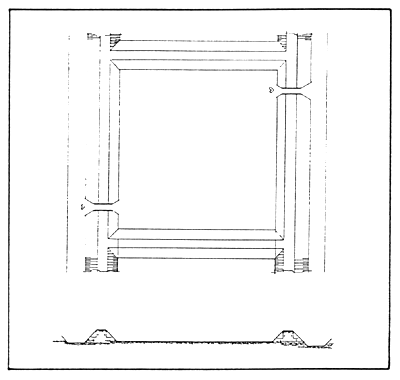
TOTAL REGIONAL PRODUCTION
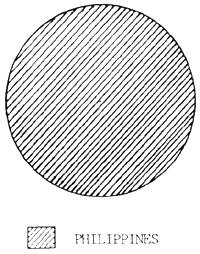
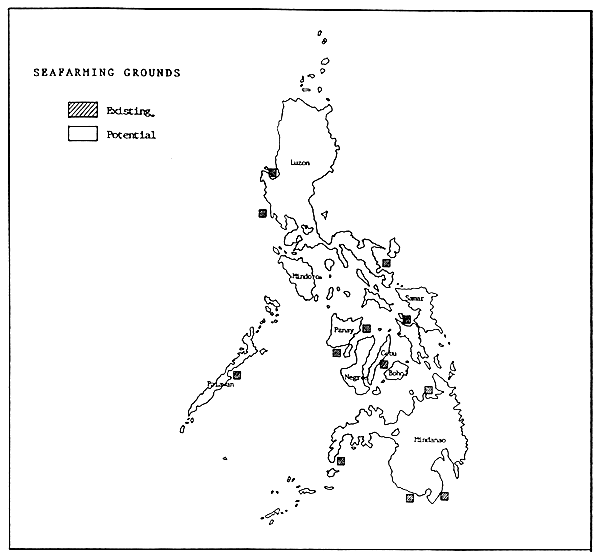
STATUS OF CULTURE
| TOPIC | SPECIES |  |
| Chanos chanos | ||
| Source of seed | Wild and artificial | |
| Culture method | Pond, pen and floating netcages | |
| Yield/ha | NA | |
| Market | Domestic and export | |
| Production area | NA | |
| Status of culture | Developed | |
| Major constraints | Refinement of broodstock development and hatchery techniques Research on feed formulation and nutrition | KEY MAP |
 | Siganus guttatus |
CULTURE PRACTICES
Rabbit fish culture is practiced as a state-of-the art in brackishwater fishponds, floating net cages and in fish pens along coves and bays. In 1987 about 14,000 MT were produced. Netcage culture in the Philippines is not yet a well established or developed culture technique. A floating netcage farm consists of a number of interlocked cages suspended in a bamboo and/or wooden frame. The farm is either kept afloat by a bamboo raft or styrofoam floats, and held in place by heavy anchors. The netcages are of different sizes, with netting of different mesh sizes. Hapa cages are made of fine mesh net and are used to rear fry to the fingerling size. Nursery cages are used to culture fingerlings to 15–20 cm, while in the grow-out cages the fish attain the marketable size. A grow-out cage commonly measures 2×2×2 m and the juvenile fish are stocked at a density of about 40 pcs/CBM. The siganids are fed with algae (lumut) usually once daily at 15% of the body weight. In order to prevent diseases the netcages are regularly cleaned.
PRODUCTION

HISTORY
Rabbit fish or siganid culture in the Philippines is not widely practiced, except in some brackishwater government farm areas and in a number of experimental farms. Although this marine fish does not command a high commercial value in the local market, it has a great culture potential. In fact, several species of siganids are found all over the archipelago. Hatchery techniques still require attention as well as the development of a reliable grow-out management system and artificial feeds.

TOTAL REGIONAL PRODUCTION
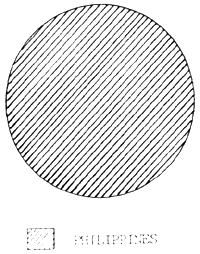

STATUS OF CULTURE
| TOPIC | SPECIES | 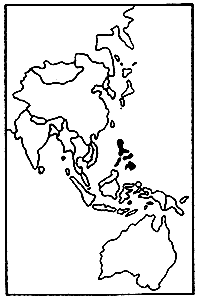 |
| Siganus guttatus | ||
| Source of seed | Wild and artificial | |
| Culture method | Pond, pen and floating netcage | |
| Yield/ha | NA | |
| Market | Domestic | |
| Production area | NA | |
| Status of culture | Developing | |
| Major constraints | Lack of suitable artificial diet Refinement of hatchery and culture techniques | KEY MAP |
 | Crassostrea iredalei Crassostrea palmipes Crassostrea malabonensis |
CULTURE PRACTICES
Three methods of oyster culture are practiced in the Philippines: broadcast, stake and hanging methods. In the broadcast method, oysters are collected in the bottom of shallow bays with strong substrates in order to support the materials used as collectors. In this system, oyster shells, stones, or other hard objects are scattered over the bottom of areas known to have good natural spatfalls. The stake method is typically used in areas where the bottom is soft for bamboo or other rigid poles to be fixed into. Usually, the stakes are placed in rows and spaced about one-half meter apart. The hanging method makes use of empty oyster shells or other material, such as coconut shells, as spat collectors. The collectors are strung on synthetic twine or heavy monofilament nylon and spaced about 10 cm apart by using bamboo tubes as spacers or by tying knots in the twine. In some localities the shells are strung without spacers. The strings are then hung from a bamboo platform or rafts.
PRODUCTION
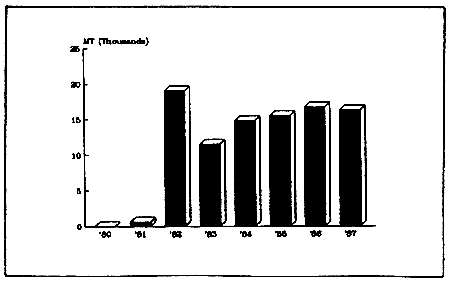
HISTORY
Several species of oyster occur in the Philippines, however only the large Crassostrea iredalei (marketed at a length of 6–9 cm) and the moderately sized C. malabonensis are cultured. Through the initiative of the Bureau of Fisheries, scientific farming has been developed in numerous experimental and demonstration oyster farms located throughout the country, such as in Cavite, Pangasinan, Sorsogon, Bohol and Cebu. Oyster growth is fast and it is possible to produce a marketable C. iredalei in 6–8 months while larger individuals in one year.
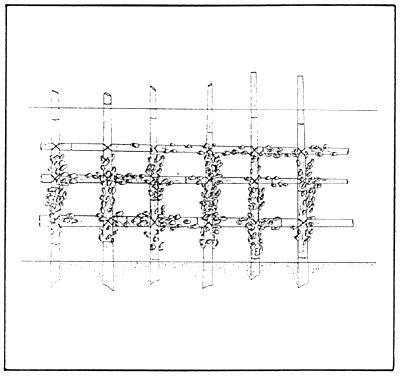
TOTAL REGIONAL PRODUCTION
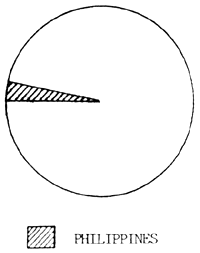

STATUS OF CULTURE
| TOPIC | SPECIES | 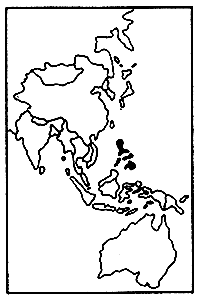 |
| C. iredalei C. palmipes C. malabonensis | ||
| Source of seed | Wild | |
| Culture method | Broadcast, hanging and stake | |
| Yield/ha | NA | |
| Market | Domestic | |
| Production area | NA | |
| Status of culture | Developed | |
| Major constraints | Poor quality control Environmental pollution Natural calamities Low price in domestic market Lack of management rules & regulations | KEY MAP |
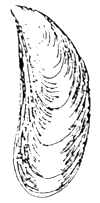 | Perna viridis Mytilus metcalfei |
CULTURE PRACTICES
The stake method with several variations is the most commonly practiced culture method in the Philippines. Bamboo poles are commonly used as they are readily available and relatively cheap. These are sharpened at the thick end and pushed into soft muddy bottoms at water depths as deep as 10 meters. The stakes are spaced from 1.5 to 2 m apart and initially serve as spat collectors. One variation is the wig-wam method, with bamboo stake fixed in a circle, but slanted towards the center so that the top ends can be fastened together. The rope-web method is made of two 5-meter long ropes fixed horizontally (2 meters apart), and tied, at the ends, to two vertically fixed bamboo poles. A 40-meter long rope is then tied in a zig-zag fashion to the horizontal ropes providing a total of 50 meters of rope between the two stakes for mussel attachment. Although, mussel culture in the Philippines has been practiced for a considerable time, annual production is still rather low. Major constraints are environmental pollution and low price in the domestic market.
PRODUCTION
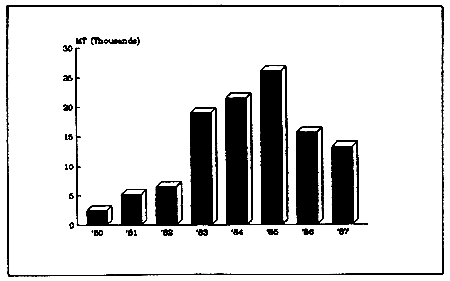
HISTORY
Green mussel (Perna viridis or sometimes referred to as Mytilus smaraqdinus) culture was first practiced in the Philippines during the 1950's and it expanded considerably during the early 1960's. The major areas used at present for mussel culture include Bacoor Bay, Cavite where there are an estimated 134 farms; Sapian Bay, Capiz with about 300 farms; and Maqueda Bay, Samar with 250 farms. An estimated 692 ha are under mussel cultivation throughout the Philippines and about 15,000 MT were produced in 1987.
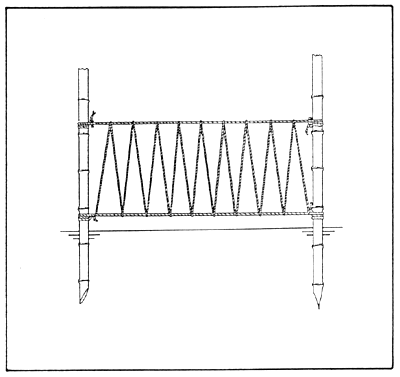
TOTAL REGIONAL PRODUCTION
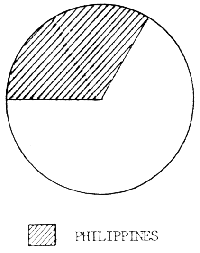

STATUS OF CULTURE
| TOPIC | SPECIES | 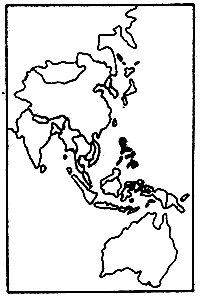 | |
| P. viridis & M. metcalfei | |||
| Source of seed | Wild | ||
| Culture method | Stake, wigwam & rope web | Bottom | |
| Yield/ha | 20–68 MT/ha stake 300 MT/ha rope web | NA | |
| Market | Domestic | ||
| Production area | 692 ha | NA | |
| Status of culture | Developed | ||
| Major constraints | Poor quality control Environmental pollution Natural calamities Low price in domestic market | KEY MAP | |
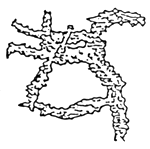 | Eucheuma cottonii Eucheuma denticulatum |
CULTURE PRACTICES
The net method makes use of a rectangular net measuring 2.5 × 5 m with a diagonal mesh work having a 25 cm bar length. The nets are installed horizontally with respect to the sea bottom. The corners of this net sheet are provided with loops which serve to fix the net to the bottom. Eucheuma seedlings are tied in the net intersections using soft plastic straus. In the floating bamboo method a net sheet is fixed to a bamboo framework usually measuring 2.5 × 5 m. Each corner of the floating bamboo frame is tied to the bottom by a loose rope. The widely practiced bottom monoline method is cheap to establish, easy to maintain and not prone to surface weather conditions. This method consists of modules usually of 28 monolines each measuring 10 m long. About 36 plants are tied on a monoline. With all the above method, healthy and strong seedlings are always selected. Eucheuma are harvested when they reach a weight of 750–850 g. Harvesting is often practiced during the periodic maintenance activities.
PRODUCTION
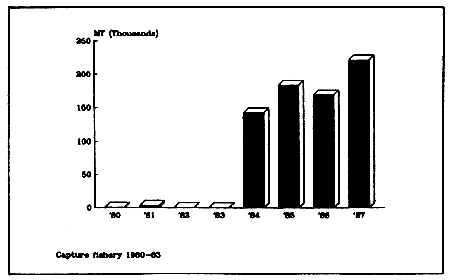
HISTORY
At present seaweed culture ranks third in the country among seafarming practices in terms of foreign exchange earning. In the early 60's, exported seaweeds derived mainly from harvests of wild stock. However, the low supply was not sufficient to satisfy the high international demand. As a result seaweed farming, particularly Eucheuma culture, was initiated in southern Philippines. At present Eucheuma is successfully cultured and over 221,000 MT were produced in 1987.

TOTAL REGIONAL PRODUCTION

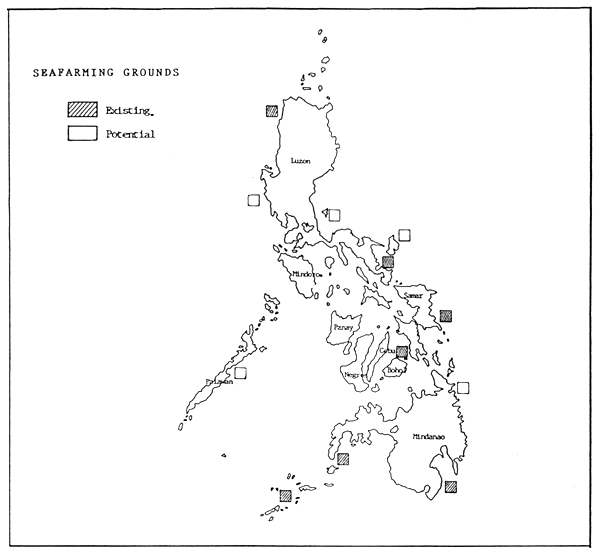
STATUS OF CULTURE
| TOPIC | SPECIES |  | |
| E. cottonii & E. denticulatum | |||
| Source of seed | Wild | ||
| Culture method | Net, floating bamboo & bottom monoline | ||
| Yield/ha | 10 MT/ha | NA | |
| Market | Domestic and export | ||
| Production area | 4,976 ha | NA | |
| Status of culture | Developed | ||
| Major constraints | Diseases (ice-ice) Low productivity due to low prices | KEY MAP | |